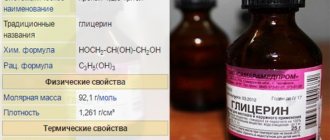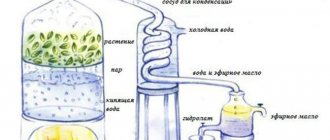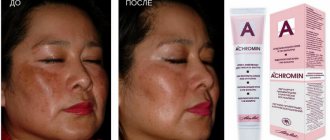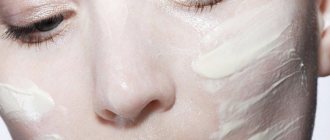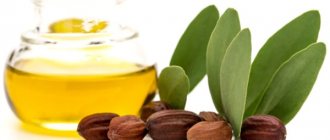Dermatitis is the general name for a group of inflammatory skin diseases that have different origins. The disease can affect any part of the body, but most often appears on the skin of the hands, feet and face. The main symptoms are itching, burning, and damage to the skin, which causes a lot of inconvenience and significantly impairs the quality of life. Most often, these manifestations are short-lived, but sometimes the pathology becomes chronic. In any case, dermatitis needs to be treated with medications, including ointments and creams, recommended by a doctor.
Causes of skin irritation
Before talking about a cream against irritation and itching of the skin, you need to understand why these unpleasant phenomena occur. Among the reasons for their appearance are the following:
- Exposure to sunlight. Some people are susceptible to photodermatosis - increased sensitivity to sunlight. This phenomenon is represented by the following symptoms: hyperemia (redness) of the skin, the occurrence of severe itching and swelling. Additionally, even if a person does not suffer from photodermatosis, prolonged exposure to the sun usually causes the skin to become flaky, dry and red, and in some cases, a rash. Therefore, before sunbathing, you must apply sunscreens and emulsions.
- Frost and wind. During the cold season, the skin of the hands and face suffers from low air temperatures, wind and precipitation. In winter, tiny crystals form on the surface of the skin, causing microtrauma, itching and flaking. Therefore, before going out into the cold, you should not apply moisturizers to your skin.
- Dry indoor air. With the onset of the heating season, many people note that their skin becomes drier and begins to peel. This is due to a decrease in indoor humidity levels. To avoid this problem, it is recommended to additionally humidify the air in the rooms and apply a moisturizer to the skin to prevent itching and skin irritation.
- Insect bites. After biting or piercing the victim's skin, a particle of the insect's saliva enters the resulting wound. It contains substances that cause severe itching, redness and swelling of the skin. Antihistamine and hormonal creams and ointments help to cope with it.
- Contact with plants. Nettle, hogweed, buttercup and some other plants can cause skin irritation.
- Wearing tight synthetic clothing. Synthetic materials create conditions for the greenhouse effect. As a result, the body sweats, tight clothing rubs it and causes redness, microtrauma and skin itching.
- Presence of diseases of internal organs. Malfunctions of internal organs often affect the condition of the skin. Diabetes mellitus, kidney and liver diseases, thyroid diseases, neurological diseases, lymphoma, HIV - all this can cause skin irritation. In this case, the use of simple creams against skin irritation will not be enough; they can only act as auxiliaries.
- Skin diseases. A number of dermatological diseases are accompanied by skin irritation, itching, burning, swelling and hyperemia. For example, this applies to psoriasis, eczema, dermatitis, fungal skin infections, etc. To combat them, corticosteroid and non-hormonal creams and ointments are usually prescribed.
- Hormonal changes. Hormonal changes that occur during pregnancy, lactation and menopause often affect the condition of the skin. The same applies to hormonal imbalances caused by diseases of the ovaries, thyroid gland, pituitary gland and hypothalamus, and adrenal glands. The skin may become drier, prone to peeling, itching and the appearance of microtraumas, and lose its former tone.
- Allergy. Allergens that cause skin irritation can include cosmetics, household chemicals, food, medications, etc.
- Pregnancy and breastfeeding. While carrying a baby, many women complain of irritation of certain parts of the body or all of the skin. This is due to changes in the balance of hormones, as well as the pressure exerted on the skin by an enlarged abdomen. During lactation, complaints of nipple irritation may occur. These unpleasant phenomena are usually caused by irritation of delicate skin caused by mechanical trauma to the nipples, thrush or stagnation of milk. To combat them, creams that are safe for mother and child are used.
- Lack of vitamins and minerals. With an unbalanced diet, following strict mono-diets, as well as in the autumn-spring period, the body may receive an insufficient amount of vitamins and minerals. For example, a lack of iron, vitamins B1, B3, B6, D often manifests itself in the form of dry and flaky skin, itching and irritation. To combat these phenomena, vitamin and mineral complexes and normalization of nutrition are used. Also, necessary vitamins can be included in creams and ointments for the skin.
- Stress. Severe emotional shocks, unresolved internal conflicts and chronic fatigue are often the causes of skin irritation. The itching usually gets worse at night.
- Psychosomatic and mental pathologies. Anorexia and other forms of eating disorders, depression, and bipolar disorders can all cause skin irritation.
Contraindications to the use of antipruritic ointments
All contraindications are based on the functions of the active substance. Many antipruritic ointments are prohibited for use during lactation and pregnancy, as they can penetrate the systemic bloodstream and have a harmful effect on the fetus.
Some products are prohibited for newborns and elderly patients. Almost all medications cannot be used in case of hypersensitivity to the active ingredients.
When treating itching, it is necessary to refrain from sunbathing and stop contact with allergens.
It is contraindicated to use any antipruritic ointments at home if the cause of the disease is unclear. In this case, you should urgently consult a doctor, as improper treatment can have serious consequences. In particular, hormonal corticosteroids weaken local immunity, which can lead to the spread of infections. Antibacterial ointments are ineffective and even harmful for viral and fungal diseases.
Cream for facial irritation
Unlike other areas of the body, which are usually covered by clothing, the face always remains open. In this regard, it suffers more from the effects of adverse weather conditions - exposure to sunlight, frost and wind. Men may experience irritation after shaving, so it is advisable for them to use special shaving creams and foams.
Irritation on the skin of the face is often caused by a reaction to substances contained in masks, peelings, foundations and decorative cosmetics - parabens, derivatives of formaldehyde and acetic acid, hydroxy acids, alcohols, etc.
To eliminate redness, peeling and itching of the face, creams for sensitive skin prone to irritation are usually used. They may include allantoin, retinol, hyaluronic acid, tocopherol, antioxidants, beta-glucan, herbal components (aloe vera, chamomile, verbena, green tea, algae polysaccharides).
Care Tips
- Prevention of scratching: short-filed nails, lightly rubbing itchy areas.
- After washing, dry your skin carefully using wet movements, use a soft towel or a hair dryer on a cold setting.
- Avoid long hot baths. Try a bath with sodium bicarbonate (baking soda) or medicated oils.
- Use loose clothing and loose bedding/blankets.
- Avoid overheating and sweating, especially during night sleep.
- Increase the humidity in the bedroom so that your skin loses less moisture.
- Wear cotton gloves at night to prevent scratching.
- Avoid damaging the skin with alcohol-containing rubbing, woolen clothing, and excessive hygiene procedures.
- Cleanse your skin gently using moisturizers.
- Use cooling, soft compresses.
- You can use an anesthetic mixture: aftershave cream with menthol 50 ml, Diphenhydramine 1% 3–5 ml, Lidocaine 2% 1–2 ml, Novocaine 0.5% 5–10 ml. Mix and serve chilled.
- Use relaxation and positive visualization techniques.
Cream for irritation in the intimate area
Redness, itching and burning in the intimate area can occur for the following reasons:
- Traumatic methods of hair removal. Skin irritation is a common occurrence after hair removal in the groin area. It can be caused by using an insufficiently sharp blade, trauma to the skin, or ingrown hairs. A special anti-irritation cream for women after depilation in the intimate area helps eliminate discomfort.
- Diaper rash. This problem is mainly seen in infants due to wearing diapers, but can also occur in adults. For example, wearing tight underwear made of synthetic materials causes a greenhouse effect and irritation in the intimate area.
- Gynecological diseases. Many gynecological diseases are accompanied by redness, itching, dryness and burning in the vagina, perineum, and in the area of the labia majora and minora. In most cases, this is caused by a violation of the vaginal microflora, the growth of pathogenic microorganisms, and changes in hormonal levels.
- Failure to comply with intimate hygiene rules. Unreasonably frequent use of pads and their infrequent change, incorrect direction of the water stream during washing - all this creates conditions for discomfort in the intimate area.
- Allergy to personal hygiene products. If soap, creams, gels and foams that are not intended for this purpose are used for washing, there is a danger of disturbing the vaginal microflora. It usually manifests itself in the form of dryness, burning and itching.
To get rid of unpleasant sensations, you need to establish their cause. To do this, you should visit a gynecologist. If the prerequisite for the development of itching and burning are external causes (epilation, allergies), special treatment is usually not required. You just need to eliminate the irritating factor, and to reduce discomfort, use a cream against skin irritation in intimate places. Typically, such products include plant extracts and essential oils, panthenol and bisabolol.
If the cause of itching and burning is gynecological problems, specialized creams are used to treat them. Depending on the type of pathogen, the action of the main active ingredient can be directed against fungi, viruses, and bacteria. In addition to the antiseptic active component, such creams usually contain lactic acid, vitamins A, D, E, and local anesthetics.
Cream for irritation on hands and feet
Dry skin on the hands is common. It is usually observed after exposure to the cold without gloves, contact with household chemicals, or washing hands with cold water. As for irritation on the legs, it usually appears after depilation, with diabetes, wearing tight shoes, and with dermatological diseases.
To combat unpleasant sensations, hormonal (corticosteroid) and non-hormonal ointments and creams are used. Corticosteroid-based products can remove signs of irritation - effectively and in a short time. However, such creams are prescribed only in serious cases, since their uncontrolled and prolonged use can be dangerous to health. Non-hormonal creams and ointments are not able to cope with serious irritation, which is accompanied by inflammation. But at the same time, they fight well against mild forms of itching and flaking due to their antihistamine components, plant extracts and local anesthetics.
Products suitable for pregnant women
There are quite a few ointments for skin allergies allowed during pregnancy. For most drugs, the instructions indicate that it should be used with caution, only as prescribed by a doctor, and some drugs are completely contraindicated.
But there are drugs that are absolutely safe to use for a baby:
- “Zinc paste” - described above.
- “Bepanten”, “Solcoseryl”, “Panthenol” - do not have a direct anti-allergic effect, but have a regenerating, softening, moisturizing and anti-inflammatory effect.
Here is not a complete list of ointments against skin allergies, but only some popular representatives. It is not recommended to prescribe such medications on your own, especially if you are experiencing the disease for the first time. Only a doctor, after a full examination, will be able to prescribe a full treatment, which will include, among other things, local therapy.
If you still have questions, ask your allergist-immunologist.
This article has been verified by a current qualified physician, Victoria Druzhikina, and can be considered a reliable source of information for site users.
Bibliography
1. https://www.rosminzdrav.ru/documents/9159-poryadok-okazaniya-meditsinskoy-pomoschi-naseleniyu-po-profilyu-allergologiya-i-immunologiya-utv-prikazom-ministerstva-zdravoohraneniya-rossiyskoy-federatsii-ot- 7-noyabrya-2012-g-606n
Rate how helpful this article was
4.6 52 people voted, average rating 4.6
Did you like the article? Save it to your wall so you don’t lose it!
Cream for irritation on the skin of the face and body La-Cri
To combat skin irritation represented by dryness, flaking, redness and itching, you can use La Cree Cream for Dry Skin. The cream contains natural ingredients: shea butter, jojoba and wheat germ, beeswax, string and licorice extracts. These active components improve the water-lipid balance of the skin, fight irritation, nourish and moisturize the skin, make it elastic and firm. This product is not only great for adult skin care, but can also act as a children's anti-irritation cream.
Diagnostics
Anamnesis
- Localization : focal or generalized.
- Onset : acute onset is the least characteristic of systemic diseases.
- Duration.
- Nature/character : severe, constant itching, worsening in the evening - scabies;
- “burning” itching – perpetiform dermatitis;
- “tingling” – polycythemia.
Physical examination
- Careful examination of the skin: primary lesions;
- excoriation of the skin in various areas (pediculosis, scabies);
- inflammatory papules on the legs with a small vesicle in the center (flea bites);
- “butterfly” sign in the upper central part of the back (hepatobiliary pathology);
- uremic chills.
Laboratory research
Complete blood count with leukoformula, urea, creatinine, liver tests (markers of cholestasis - alkaline phosphatase, gamma-glutamyl transpeptidase (GGT), determination of bilirubin), thyroxine (T-4) and thyroid-stimulating hormone (TSH), blood glucose.
Clinical researches
As a result of clinical studies conducted, it was confirmed that La-Cri cream for dry skin:
- eliminates dryness and flaking
- retains skin's own moisture
- protects skin from wind and cold
The conducted clinical study proves the high efficiency, safety and tolerability of products for daily skin care of children with mild and moderate forms of atopic dermatitis and during remission, accompanied by a decrease in the quality of life of patients. As a result of therapy, a decrease in the activity of the inflammatory process, a decrease in dryness, itching and flaking was noted.
Sources:
- Andropova T.V., Gudina M.V., Odintsova I.N., Hygiene of children and adolescents, Siberian State Medical University Publishing House, 2022.
- Cohen Bernard A. Pediatric dermatology, MEDpress-inform, 2015.
- Bonifazi Ernesto, Differential diagnosis in pediatric dermatology, Panfilov Publishing House, Binom. Knowledge Laboratory, 2014.
Pathophysiology
Signals for pain and itching caused by skin causes are transmitted along the same pathways, but the afferent C-fibers differ functionally: one part of the nerve fibers is stimulated by histamine, the other by other substances that cause itching (for example, serotonin). There is evidence of similarities between neuropathic pain, itch and cough. Their common property is peripheral and central sensitization of the afferent nervous system. This explains the effectiveness of antiepileptic drugs and antidepressants for such a variety of conditions, as well as the ineffectiveness or low effectiveness of H1 blockers for some types of itch.
Mechanisms and mediators involved in the formation of the sensation of itching:
- amines (histamine, serotonin, acetylcholine);
- proteases and kinins (tryptase, chymase, kallikrein, bradykini, etc.);
- neuropeptides (substance P, neurotensin, etc.);
- cytokines (prostaglandin E reduces the threshold for susceptibility to itching);
- opioid receptors (metenkephalin, leuenkephalin, β-endorphin), naloxone reduces itching, opiates relieve pain but increase itching.

